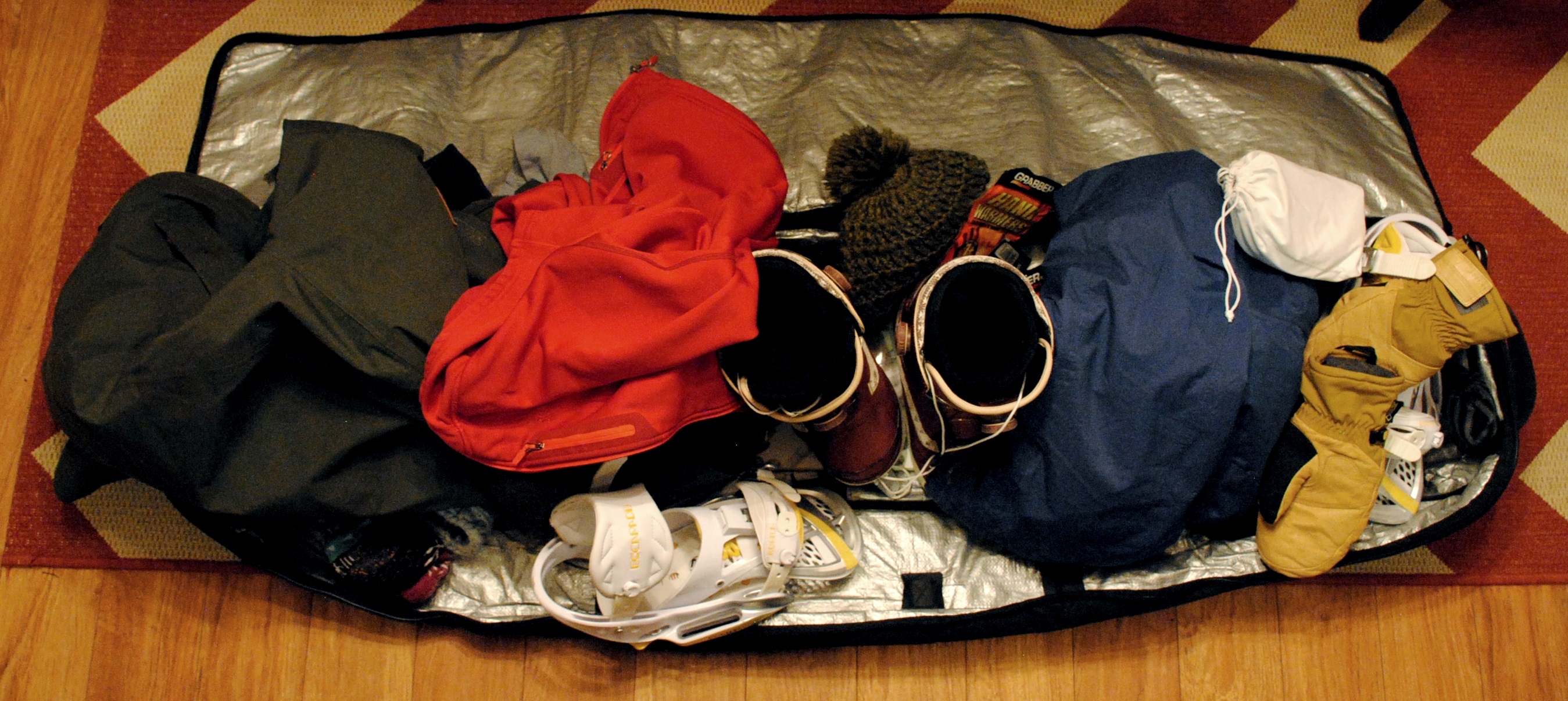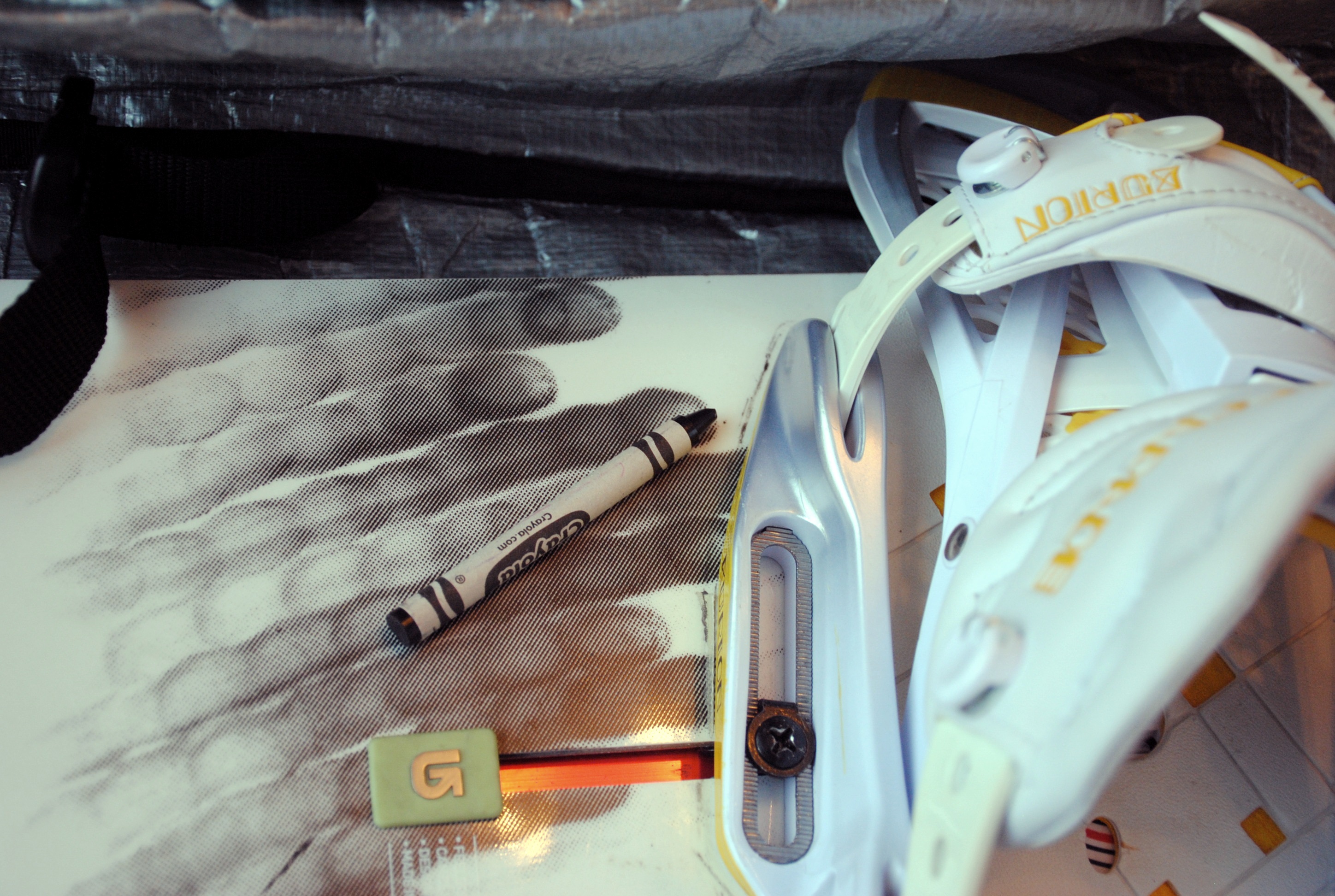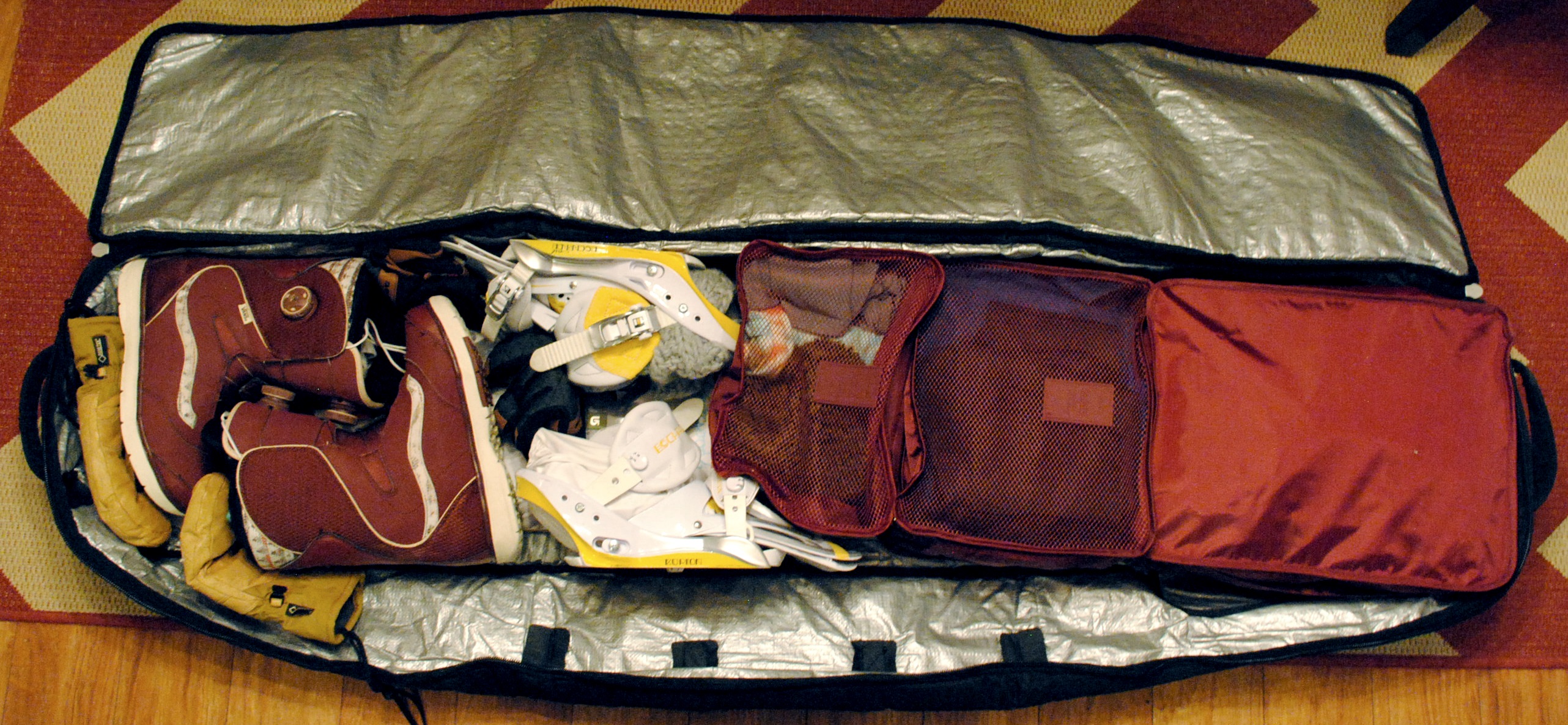Planning a ski and snowboard vacation that requires flying can be just as daunting as it is exciting. How do you get all your beloved (and expensive) gear out there with you? Traveling with your gear is easier, and less nerve-wracking, than you might think.
Airline Policies
First, find out your airline’s specific policy on checking skis/boards which should be available on their website. Many airlines treat ski gear the same as regular checked luggage regardless of the longer dimension, although standard weight restrictions will apply. Typically, skis and boots are considered one checked item, even if they are in separate bags. Again, check with the airline you’re flying on for their exact rules and if you have any doubts, give the airline a call.

Luggage
Invest in a good bag or hard shell case for your skis or snowboard. It may be the biggest cost up front, but you’ll spend more to fix or replace damaged equipment. Look for ski/board bags that are padded, sturdy, has wheels, and is larger than your gear (I use a 156 cm bag for my 144 cm board). Some bags might have room for extra gear and clothing, as well as boots. If not, pack those in a separate boot bag.
Pro Tip: Make your luggage recognizable with duct tape, stickers, patches, or ribbon. If you have the same bag as another person, it will be easier for everyone to make sure they go home with the right gear.
Packing Tips
Look up suggested ski packing lists and create a thorough one for yourself. Use packing cubes, stuff sacks, or compression bags to keep items organized and separated; You can then use them for dirty laundry.

Skis
Begin by strapping each brake down to keep the bindings compact and make packing around them easier. Use a thick rubber band or gear tie and be sure to position it over the top of the binding, not around the ski which would create pressure on the ski’s edges. If you have a bag or case with room for additional gear, separate the skis in the bag to better distribute weight. Strap a pole to each ski so they don’t interfere with other items and cover the tips (wine corks work great).
Snowboards
Remove the bindings from the board to avoid damage while getting jostled around by handlers and in flight. Use a crayon to mark where your bindings are located before removal. It’ll stay put while traveling and riding, but can easily be removed with the rough side of a sponge or finger nail. This will make set up a breeze. Pack the binding hardware and a tool or screwdriver in a zip-lock bag.

Helmet
While it may seem like a great idea to stuff your helmet in a checked bag and not drag it through airports, it’s recommended to carry it on the airplane with you. Although helmets are designed to withstand multiple minor bumps, they should only take one major hit and you don’t want that to be from a turbulent flight or rough baggage handling.
Boots
People are pretty divided on whether to carry-on or check boots. Carrying on can help reduce the weight of your checked luggage and ensure your boots make it to the mountain with you. However, boots are heavy, awkward, and can be a hassle in narrow airplane aisles and during layovers. Either way, stuff your boots with smaller items like socks, neck gaiters, hats and hand warmers to avoid wasted space. Sprinkle in a little baking soda or throw in a dryer sheet to keep things fresh.

Ski Clothes
It’s tempting to wear all your layers up on the plane in an effort to save space in your luggage…which isn’t a terrible idea if you have a short flight. But you shouldn’t need to wash all your gear by the time you land because you sweat through it already. Take one jacket on the flight, preferably a puffer since it can double as a pillow. If you choose to wear winter boots onboard, bring a pair of light slip-ons to switch into on the plane and while trekking between gates on a layover.
Street Clothes
Resist the urge to pack the same amount of street clothes you would for a non-ski trip. You’ll be spending most of your time on the slopes and in many mountain towns, ski clothes double as street threads. Remember non-ski socks and gloves, sunglasses and a swimsuit if you’ll have access to a pool or hot tub.

Additional Recommendations
- Book flights with layovers of at least one hour to give your skis/snowboard a better chance of arriving at your destination the same time you do.
- If driving with others to the airport, have the driver drop-off all the gear and passengers at the airline’s designated entrance. The driver can then park the car and walk in bag-free. This also works on the return trip.
- When you land at your destination and head to baggage claim, don’t panic if you don’t see your skis/boards on the carousel assigned to your flight. Most airports have a separate claim area for large and oversized baggage.
- Research local ski shops and bookmark one or two in case you do forget something or need a tune-up or repair.
- Worried the groomer skis you brought aren’t going to fare well after a dump fresh snow? Consider renting skis for the biggest powder day. Costs for a one-day ski rental are reasonable, and could make the difference between an okay and epic day. Be sure to get to the shop early or even the night before; They’ll be busy!
- If you’re skiing more than a few days consider waxing your skis/board once during the trip, especially if there’s fresh snow.
Shipping Gear
An alternative to checking gear is to ship it to your destination ahead of time. Check with the resort or your accommodations to see if and how to ship it to them. You won’t need to haul your hard goods to and from the airport, but shipping gear is generally more expensive than checking it.
Visit your local ski shop and ask if they have any extra ski/board boxes you can snag. Have a backup plan if you make to the mountain before your skis do or your pickup location is closed because your flight was delayed and you got in late. Make arrangements or set aside time on your trip to ship the skis back before leaving.
Don’t let the thought of flying with ski gear overwhelm you. Remember all options require some money, time and effort—whether it’s packing and checking luggage, shipping and picking up gear or visiting a shop to rent skis. But none have to be a hassle with a little planning.
Sarah Quandt
Sarah learned an appreciation for all the Northeast has to offer from a young age, with her parents stuffing her in the family van for countless road trips. Despite being a little girl living in Upstate NY, she was somehow convinced she was destined to be a professional surfer. Thankfully she discovered the more geographically appropriate hobby of snowboarding while attending the X-Games in Vermont. She spends most of her time trail running, hiking and snowboarding but is always looking for a new challenge. As a current Adirondack 46er, Sarah is now working on solo-hiking all of the ADK high peaks. She balances her love for travel and adventure with her career as a civil/environmental engineer and resides in Saratoga Springs, NY with her husband and adorable dog.




